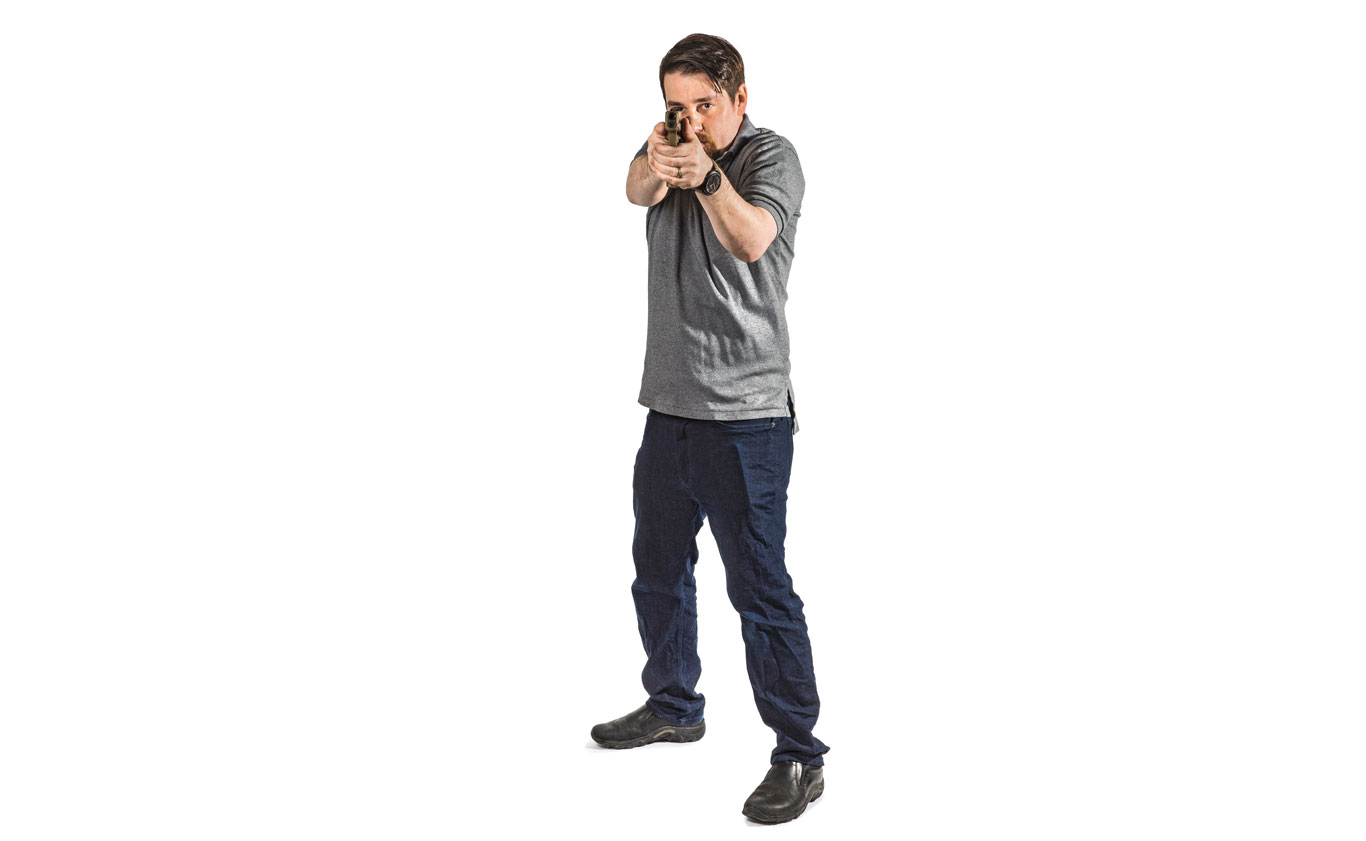
From the earliest days of Col. Jeff Cooper’s Modern Technique, we’ve been taught that stance (Jack Weaver’s stance, of course) was the foundational concept that everything is built on. But is it?
This is not a column pitting the Weaver stance against the Isosceles stance. It’s been debated to death, and as far as actual armed confrontations are won, it is irrelevant in my opinion. Before we go on, let’s first discuss what a gunfight actually is.
A gunfight is an armed (with guns) encounter between two or more people who are shooting at and trying to kill the other person. There are many armed encounters that do not meet this criteria. They are called shootings.
Like most children of the 1980s, I began my shooting career as a student of the Weaver stance. After my first few gunfights, I threw that whole stance idea aside. The vast majority of armed conflicts that I’ve studied do not allow time to assume a particular stance. They are most often too fast, too violent and too chaotic.
Now, before you write and send angry letters and emails to the editorial staff of Guns & Ammo, allow me to explain. I still like the isosceles and there are plenty of guys that have had great success with the Weaver, but it’s time for us to stop calling them “stances.” A stance implies that your feet are involved. A Weaver could mean hips and feet are set at 45 degrees to the target. In an Isosceles, it could mean feet are equidistant and flat. Both are wrong.
I don’t care if you love the isometric tension of the Weaver or the static tension of the Isosceles, if your feet are not athletically spaced with your

